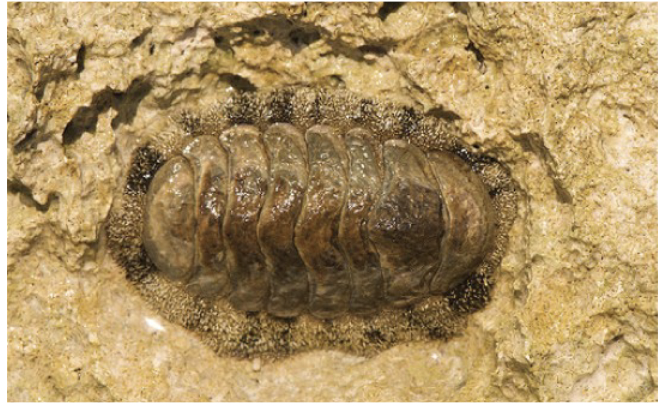Invertebrates II Bio 1108
1/42
There's no tags or description
Looks like no tags are added yet.
Name | Mastery | Learn | Test | Matching | Spaced |
|---|
No study sessions yet.
43 Terms
Mollusca
This phylum falls under the superphylum Lophotrochozoa
Over 100,000 species
predominantly marine
consists of a mantle, muscular foot, and visceral mass
has a complete digestive system
Gills for respiration
Open circulatory system (except for cephalopods who have a closed circulatory system)
Radula
mantle
a fleshy dorsal body wall that secretes the shell and encloses the mantle cavity, which houses gills, anus, and other organs, and plays a role in respiration, excretion, and locomotion
Metanephridia
a type of excretory gland found in many types of invertebrates such as annelids, arthropods and mollusca
radula
unique tongue-like organ
Classes of Phylum Mollusca
Class Polyplacophora
Class Gastropoda
Class Bivalvia
Class Cephalopoda
Chiton
Part of Phylum Mollusca
Class Polyplacophora
Many plates
Have radula to scrape algae off of rocks

Gastropods
Phylum Mollusca
Class Gastropoda
Consist of snails, slugs (no shell), conchs, and nudibrachs
Bivalves
Phylum Mollusca
Class bivalvia
Clams, oysters, and scallops
Cephalopods
Phylum Mollusca
Class Cephalopoda (lit. head-foot)
Most unique group of molluscs
Closed circulatory systems
“Intelligent” group of invertebrates
Ex. nautilus, giant cuttlefish, reef squid, blue-ring octopus
Annelida
This phylum is characterized by rings that are distinct segments separated by a septum
Advantages of segmentation
Repitition provides backup
Coelom acts as hydrostatic skeleton
Permits specialization
Earthworm
Phylum Annelida
Most advanced worms
Double transport system
Circulatory system and coelomic fluid both carry nutrients, wastes and respiratory gases
Complete digestive system
Closed circulatory system
Classes of Annelida
Class Oligiochaeta - Earthworm
Class Hirudinea - Leech
Class Polychaeta - Marine worm
Superphylum Ecdysozoa
This is a superphylum
contains huge group of animals
Includes Arthropods and Nematodes
Ecdysis: external covering called cuticle that molts
Separation from Lophotrochozoa supported by both molecular data and morphology
Posses cuticle for support and protection
Some have metamorphosis
Nematoda
This phylum consists of:
Pseudocoelomates
Many are parasitic with complex life cycles (such as heartwrom)
Tardigrada
This phylum contains organism that is an extremophile organism
Extremophile organism.
• Temperature range: -272°C to 150°C.
• Pressure: vacuum to 6000 atm.
• Can survive extreme ionizing radiation (UV,
X-ray). LD50 6,200 Gy vs 2.5 Gy human
• Can survive in water or survive desiccation to
1% water or less.
• Oviparous reproduction (lay eggs).
Arthropoda
“Most succesful” phylum
Over 1.1 million described living species
Success related to body plan that permits them to live in all major biomes
Exoskeleton made of chitin and protein
Can be extremely though or soft and flexible
Relatively impermeable to water
Arthropoda
This phylum consists of organisms that are:
Key pollinators, decomposers, and crucial web participants
Consist of segmented bodies that facilitate feeding and movement
Can molt
High reproductive rates
Undergo metamorphosis
Advanced sensory apparatus for communicating, matting, foraging, and predator evasion
Small in size
Short life cycles allow for rapid evolutionary responses
tagmata
fused body segments/distinct body segments
chitin
material that makes up exoskeleton of arthropods
open
Arthropods have this circulatory system
hemocoel
cavity containing organs
gills or trachea
two ways in which arthropoda respirate/conduct gas exchange
Subphylums of Arthropoda
Subphylum Chelicerata
Subphylum Myriapoda
Subphylum Crustacea
Subphylum Hexapoda
Chelicerata
This subphylum contains spiders, horseshoe crabs, ticks, and scorpions
Myriapoda
This subphylum contains centipedes and milipedes
Crustacea
This subphylum contains crabs, lobsters, and crayfish
Hexapoda
This subphylum contains beetles, flies, butterflies, and fleas
Chelicerae
claw-like or fang-like mouth parts
Chilopods
Aka centipedes, contain one set of legs per segment and are carnivores
Diplopoda
Aka millipedes, contain two sets of legs per segment, and are herbivores
carapace
the hard upper shell of a crustacean
spiracles
respiratory openings, found in insects and some fish, that allow air or water to enter their respiratory systems
Echinodermata
This phylum breaks down to mean spiny skin
adults exhibit pentaradial symmetry
Larval forms have bilateral symmetry
Capable of regeneration
Water vascular system
No head region
Have a nerve ring
Contains organisms such as sea stars, brittle stars, sea urchins, sea lilies, sea cucumbers
water vascular system
network of hydraulic canals unique to echinoderms, like starfish and sea urchins
facilitates locomotion, feeding, and respiration through controlled water movement
madreporite
a perforated plate by which the entry of seawater into the vascular system of an echinoderm is controlled
Subphylums of Chordata
Subphylum Cephalochordate
Subphylum Urochordata
Subphylum Vertebrata
notochord, dorsal hollow nerve cord, pharyngeal gill slits, and post-anal tail
fundamental chordate characteristics
Cephalochordate
Invertebrate chordates - lancelets
Small filter feeders that bury in substrate
Urochordata
Invertebrates chordates - tunicates
notochord
flexible, rod-shaped structure that runs along nerve chord
in vetebrates, it develops into the vertebrae
dorsal hollow nerve cord
develops into spinal cord in vertebrates
pharyngeal gill slits
in vertebrate fish - these develop into gill support
in tetrapods; develop into parts of ears and tonsils